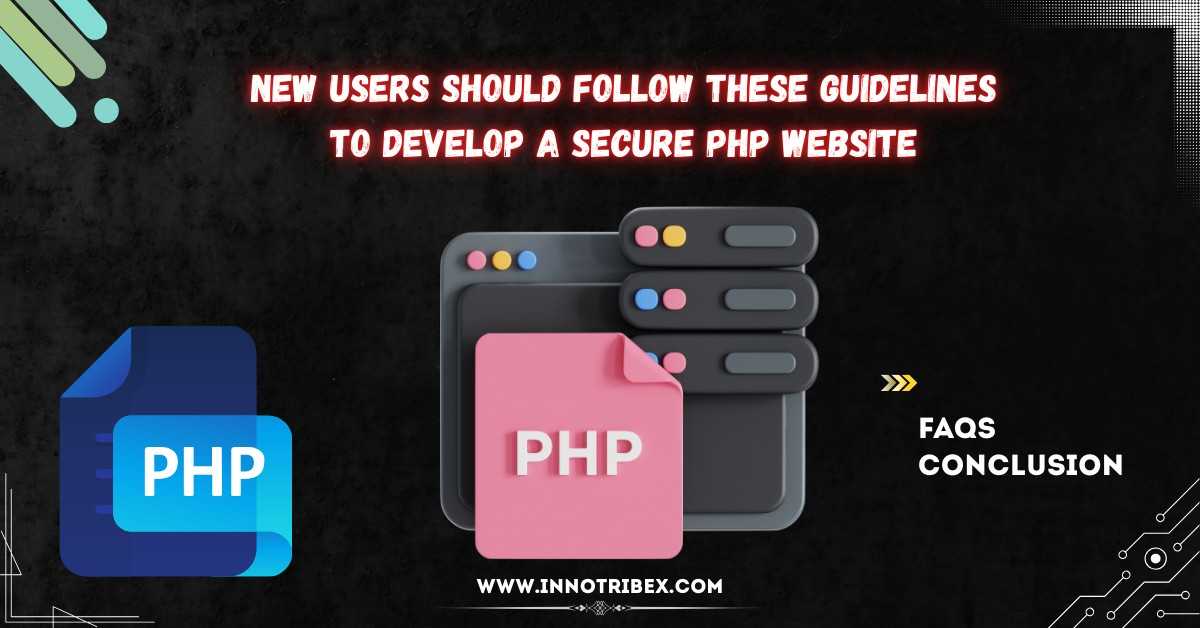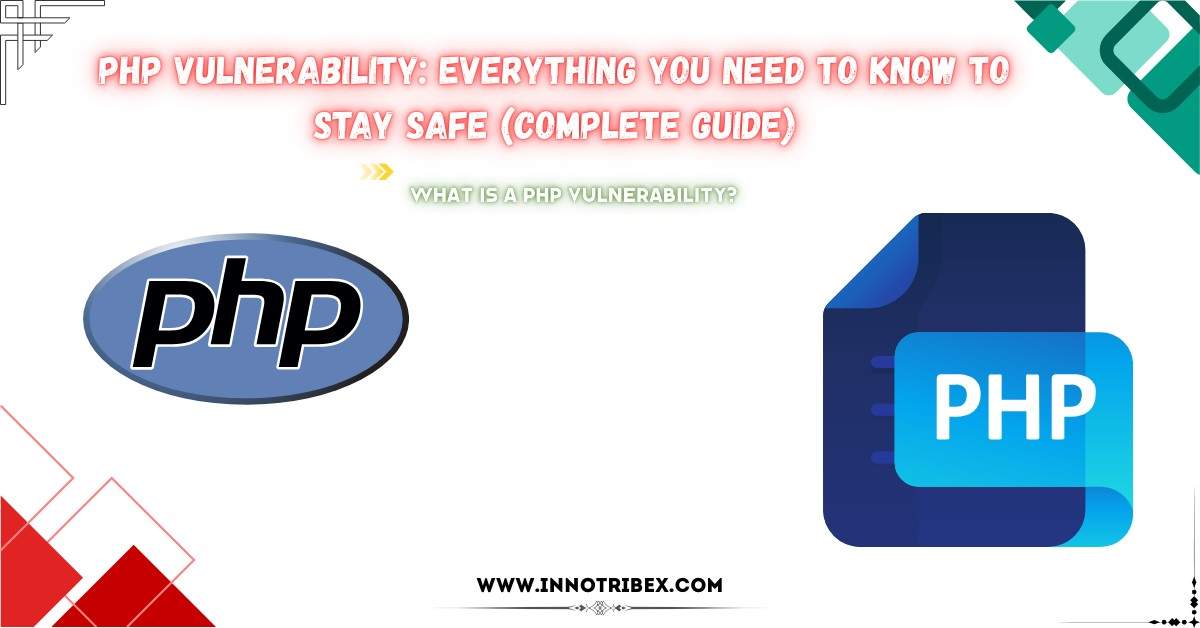The programming language PHP runs on numerous websites which total into millions worldwide. Through PHP developers create computer programs which develop pages that work actively and correspond with site visitors. The presence of mistakes within PHP code creates a situation known as PHP Vulnerability.
Web attackers utilize PHP Vulnerabilities because they are weak spots within the PHP programming basis used for website development. We will define every PHP Vulnerability aspect within basic vocabulary that makes information accessible to students.
Let’s dive in!
What is a PHP Vulnerability?
PHP Vulnerabilities function similarly to a security system whose locking mechanism has become impaired. The code flaw in PHP programming permits unauthorized website access for attackers.
- The vulnerabilities serve as entry points for hackers to achieve three malicious outcomes which include data theft and website alteration and server software installation.
- Server operators lose valuable data including passwords and banking details.
- Delete or change website information.
- Install dangerous software on servers.
Haywards Heath finds itself in a vulnerable state when PHP Vulnerabilities exist similar to having your front door unlocked during nighttime. Hackers take pleasure in discovering websites with minimal security to exploit them.

Common Types of PHP Vulnerabilities
PHP code has numerous points which could lead to its weakness. The most typical vulnerabilities among PHP systems include:
1. SQL Injection
A hacker manages to manipulate the website’s database system for releasing user private information. The website becomes vulnerable because it fails to validate user input.
Example:
The hacker uses special code in the login form to obtain unrestricted user account access.
2. Cross-Site Scripting (XSS)
Hacking operations embed malicious script codes into websites. The script infiltrates visitor information while they access the website.
Example:
A page visit results in your login information being transmitted to a hacker without your knowledge.
3. Remote Code Execution
The existence of PHP Vulnerabilities lets hackers execute their customized code on servers.
Example:
They would establish an infection on your system or transform it into a machine which sends unwanted promotional messages.
4. File Inclusion Vulnerabilities
A website receives and executes malicious files which hackers designed to load behind its back.
Example:
The hacker distributes an infected image file that hides the dangerous virus code.
5. PHP Object Injection
By improperly using the unserialize() function PHP allows hackers to introduce dangerous content which results in control gain.
Example:
Unknown PHP objects with fake data can deceive the server system for administrator privileges.
- PHP Vulnerabilities create serious risks because of their dangerous nature.
- PHP Vulnerabilities generate major losses to affected systems. Here’s why they are dangerous:
- Websites can be shut down.
- User personal information exists at risk for being stolen.
- Hackers force victim organizations to pay money through ransomware attacks.
- Business reputation can be destroyed.
- Huge financial losses can occur.
- Sites that experience a PHP Vulnerability attack will lose their customer base and trust as well as financial resources.
A Real-World Case: CVE-2024-4577
Information technology experts discovered CVE-2024-4577 as a major PHP Vulnerability during 2024. Through CVE-2024-4577 hackers gained the ability to assume control of websites deploying PHP applications on Windows-based platforms.
Hackers used this vulnerability to:
- Install cryptocurrency miners.
- Spread viruses like Quasar RAT.
- Steal sensitive information from servers.
The worldwide web vulnerability led to millions of dollars in damages as many sites across multiple country domains suffered effects. The PHP Vulnerability demonstrates the extreme dangers that come from just a single PHP security flaw.
How to Protect Your Website from PHP Vulnerabilities
The protection against PHP Vulnerabilities can be achieved through several effective methods.
1. Update PHP Regularly
The most effective defense is to operate with the most up-to-date version of PHP. Updates fix known vulnerabilities.
2. Validate and Sanitize Inputs
Never trust user inputs. You should inspect and purify data before applying it into your system.
3. Use Secure Coding Practices
Secure PHP code development requires you to follow established guidelines during programming. Avoid dangerous functions like eval().
4. Limit File Uploads
The system needs to limit only authorized users from uploading files. An additional security measure should be performed to validate files appended to the system.
5. Turn Off Unnecessary PHP Functions
Owners should disable unnecessary functions associated with security risks including system(), shell_exec(), and exec().
6. Install Security Plugins
Your website protection is possible through several available plugins that function as monitoring tools against threats.
7. Backup Regularly
A backup of your website should always be maintained. Quick website restoration becomes possible through backups in case any errors occur.
Impact of PHP Vulnerabilities on Businesses
- A PHP Vulnerability within a business website website generates multiple negative effects including:
- Losing customer trust
- Failure to protect user data leads to business penalties through fines.
- Expensive lawsuits
- Losing competitive advantage
- Permanent damage to the brand’s image
- Major enterprises spend substantial resources on PHP website protection because of this reason.

New Users Should Follow These Guidelines to Develop a Secure PHP Website
- Individuals starting PHP learning can avoid creating PHP Vulnerabilities through these essential points.
- Every user input requires special characters to be escaped for protection.
- Never trust what users enter.
- Use HTTPS for secure communication.
- Keep error messages simple. All security-sensitive information should be omitted from error messages.
- Study and implement all security risks listed in the OWASP Top Ten.
- The provided guidelines will help you develop more secure PHP projects.
Further reading suggestions: New Nintendo Switch 2 Consoles Are Being Tested By Japan Fans In Advance Despite Industry Tariffs Concerns
FAQs About PHP Vulnerability
1. What does PHP Vulnerability mean?
A security weakness of PHP code allows attackers to harm websites through php vulnerabilities.
2. The severity of PHP Vulnerabilities should be taken seriously.
It can be very serious. Hacker attacks enable unauthorized access to data while at the same time inflicting harm to websites through various means that might lead to complete server control seizure.
3. Research shows that PHP Vulnerabilities appear frequently in the discovery process.
New weaknesses in PHP appear continuously. All PHP users need to maintain their installations through regular updates.
4. New PHP users should adopt which methods to prevent PHP Vulnerabilities?
For beginners to minimize risks they should apply secure coding practices and perform user input validation and update their PHP installations.
5. What is CVE-2024-4577?
The security flaw CVE-2024-4577 emerged in PHP during 2024 which let cyber attackers execute harmful code within websites.
6. Security plugins serve as guards against PHP Vulnerabilities when properly implemented.
Security plugins function as threat detection tools alongside common threat blocking functionality yet they fail to address the need for proper coding methods.
7. Is PHP still safe to use?
PHP maintains safety only when developers practice secure programming techniques and conduct regular website updates.
This message serves as closure to follow security practices and maintain regular platform updates.
The PHP Vulnerability acts as a weak spot that breaks through strong security walls. The speedy resolution of a vulnerability makes your website remain secure. If you leave the vulnerability unattended hackers will naturally find their way past it.
- Practicing software updates along with secure coding rules and maintaining high alertness will keep your systems safe. Learning about PHP Vulnerability marks the starting point for protecting websites and applications against harm.
Stay smart. Stay safe. 🚀




Pingback: AI in Education: 5 Big Opportunities and Major Challenges
Pingback: Learn AI-Assisted Python Programming: 7 Powerful Tips